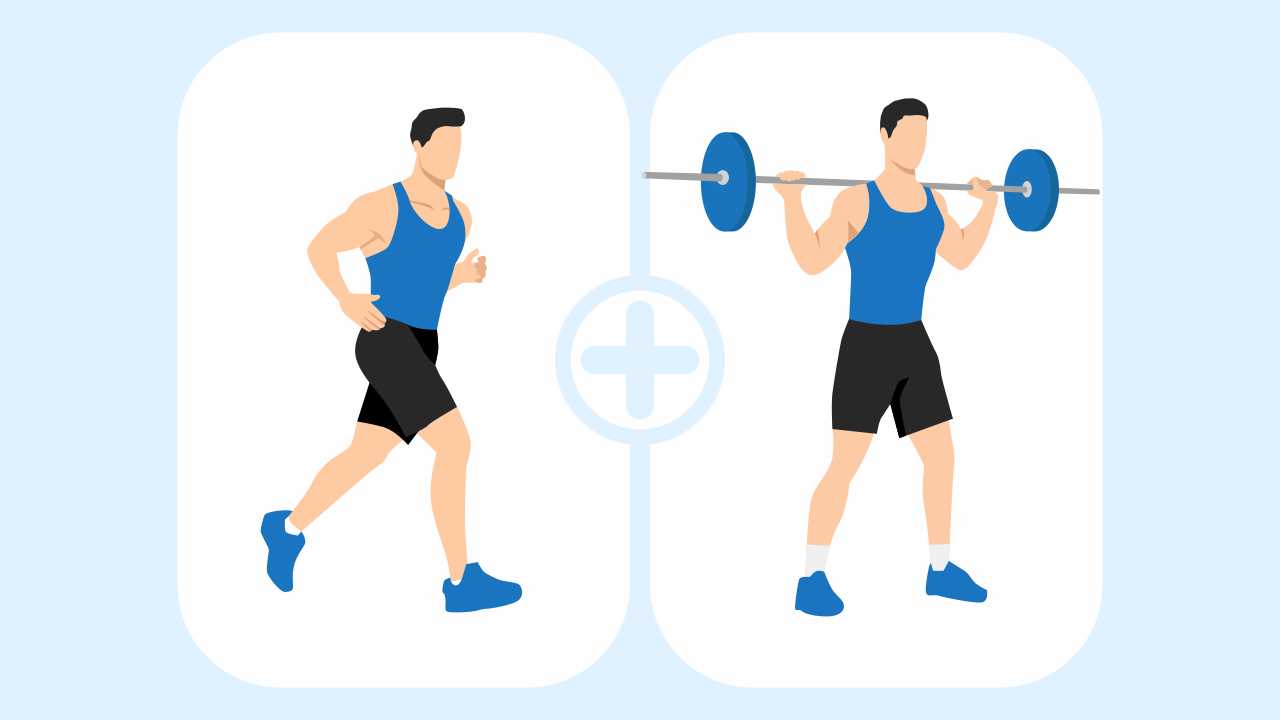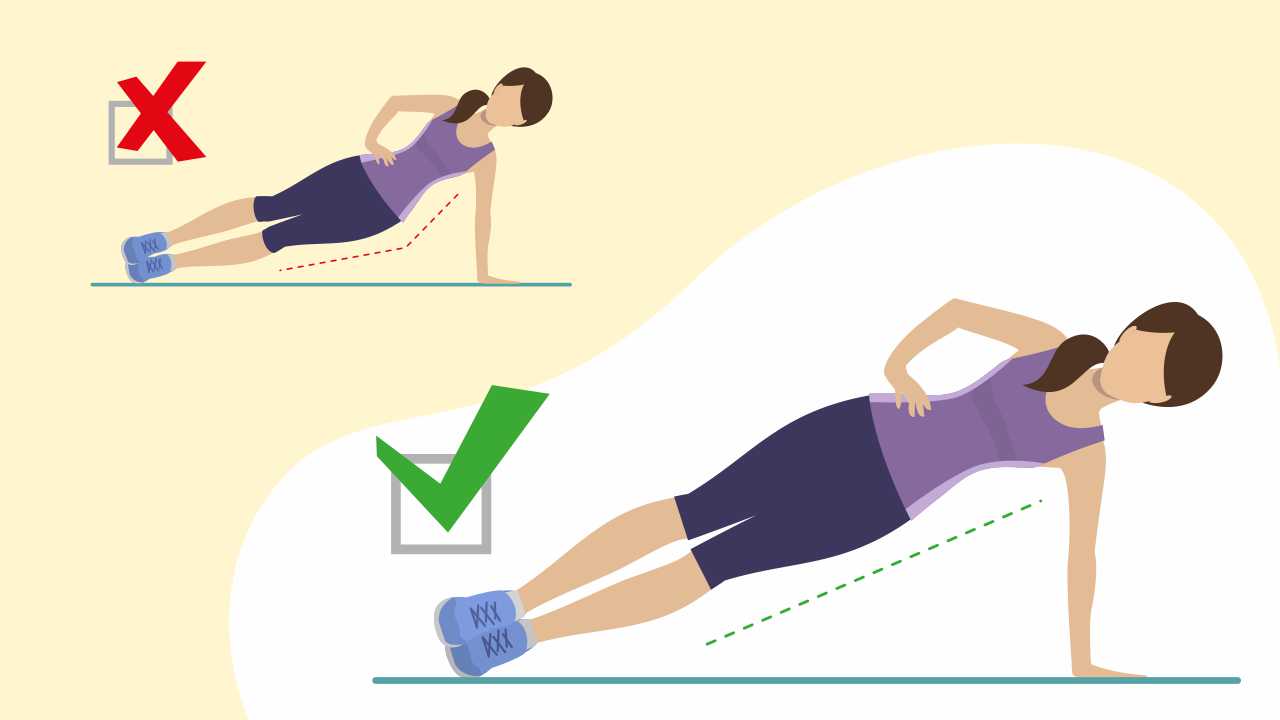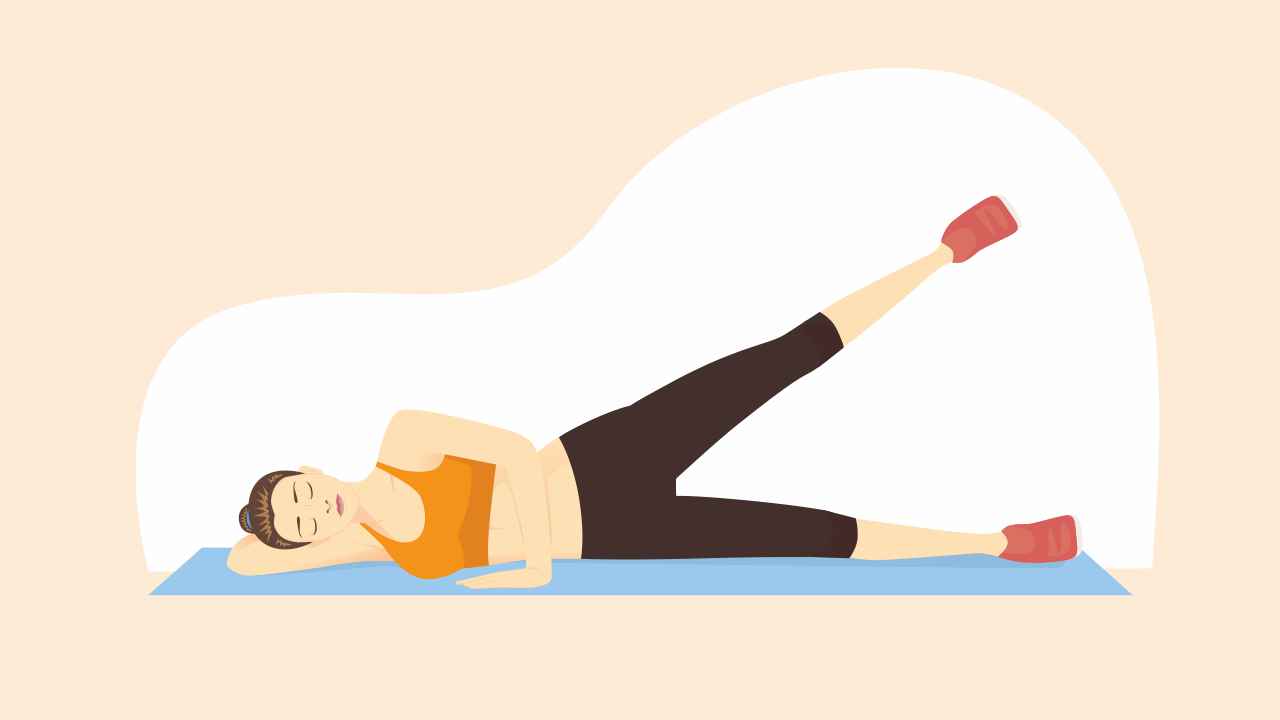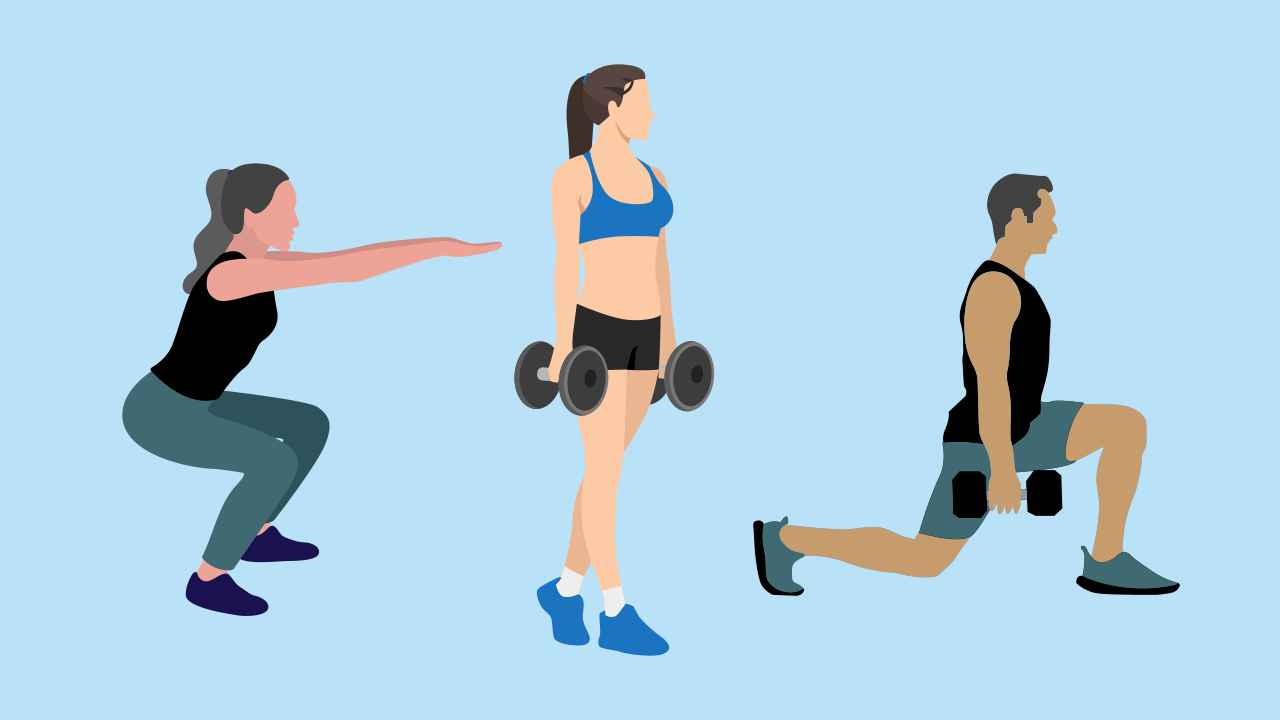
The Science of Training: Principles and How to Apply Them

Physical exercise or training has numerous health and mental benefits and must be a part of your daily life. It helps build strength, speed, power, endurance, as well as improve self-esteem. It helps you gain knowledge about your body and its capacities, and ways to improve them. It also makes your body more resilient against injuries and illnesses.
Principles of training
Training is the practical application of the science of sport and health to improve one’s quality of life and athletic performance. It also helps reduce the risk of injury and assists in injury rehabilitation. For training to be effective, a few key elements — think training intensity, training volume, training load, specificity, progression and periodization — need to be in perfect harmony.
Let’s learn about some of the key principles of training, and how you could apply them to achieve your goals.
1. Training load or training intensity
Exercise is a stressor that produces physical and mental responses in the body. It is this stress that helps us adapt to training. For training to be effective, and for optimal adaptation, this stress needs to be appropriately controlled. It is achieved by careful application of training load, and has two variables:
- External load: This is determined by the organization, quality, and quantity of exercise. For instance, external load in resistance training is the amount of weight lifted. Total work done, distance covered, or the achieved velocity are other examples.
- Internal load: Specific external load creates a specific internal load in the body (termed as psychophysiological response). Heart rate, skin color, sweating, genetics, nutrition, lactate threshold, hydration, and sleep are some examples of internal load.
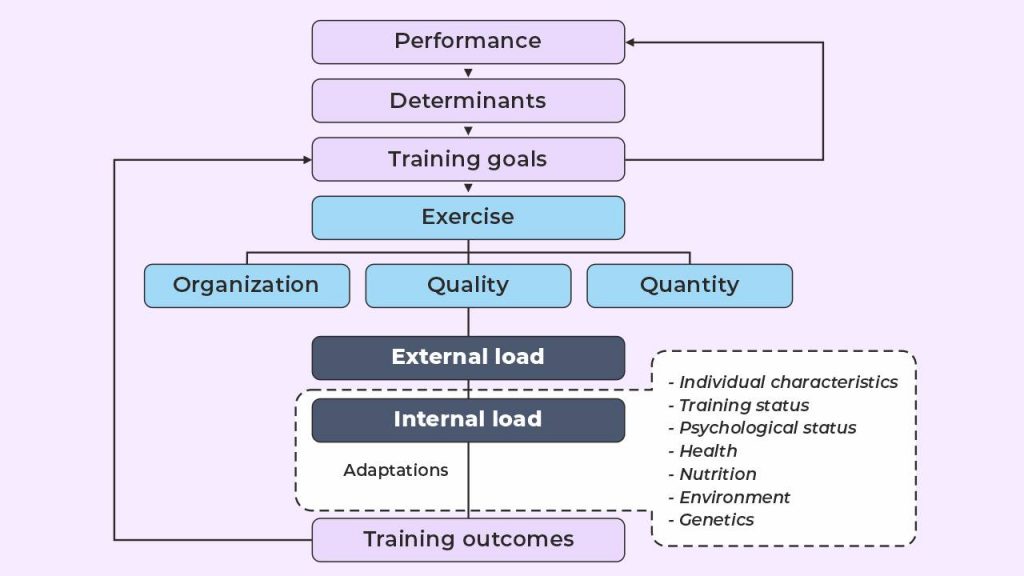
2. Training Volume
Training Volume and load are inversely proportional. So, as the intensity (load) goes up, training volume goes down. In resistance training, number of sets and repetitions represent total volume of training. Whereas, the amount of weights lifted is training intensity. An effective training program should strive to strike the right balance between training load and training volume.
3. Individuality
Every individual is different (anatomy, training age, genetics, lifestyle), and training should be planned according to the athlete in question.
4. Specificity
Simply put, if you want to improve your 100m sprint, you shouldn’t be training like a marathon runner. Specific training induces specific response — your training should mimic the demands and skills of your actual activity or sport.
5. Progressive overload
In order to continue making progress, training demands placed on the systems of the body must be increased (overloaded) as they adapt and become capable of producing better performance (speed, strength, power, and endurance). This is why training must always be progressive in nature, barring when the body is reaching the state of overreaching or overtraining.
Application of principles of training
Now, let’s find out how to apply the principles of training intensity and training volume to your workout regimen.
Volume is the number of sets and repetitions you perform. If you perform three sets of five repetitions, your total volume is fifteen repetitions. Volume and intensity are conversely proportional — as intensity goes up, volume reduces. It is humanly not possible to perform multiple sets or reps with one-rep-maximum load (1-RM).
It is common to prescribe training volume on the basis of 1-RM. Here is how you can find your 1-RM for a particular exercise. It could be predicted using repetitions-to-fatigue with a submaximal weight.
Beginners: 1-RM (kg) = 1.554 X 7 – to 10-RM weight (kg) – 5.181
Advanced: 1-RM (kg) = 1.172 X 7 – to 10-RM weight (kg) + 7.704
For example, estimate 1-RM bench press score for a trained individual whose 10-RM bench press is 70kg as follows:
1-RM = 1.172 X 70 KG + 7.704 = 89.7 kg.
| Repetitions | %1RM |
|---|---|
| 1 | 100 |
| 2 | 95 |
| 3 | 93 |
| 4 | 90 |
| 5 | 87 |
| 6 | 85 |
| 7 | 83 |
| 8 | 80 |
| 9 | 77 |
| 10 | 75 |
| 11 | 70 |
| 12 | 67 |
| 15 | 65 |
Relation between intensity and volume of training
Ratings of perceived exertion
Another widely used and reliable tool for prescribing exercise intensity is Borg’s Ratings of Perceived Exertion (RPE). Developed by Swedish psychologist Gunnar Borg, the scale allows the user to rate how easy or hard an exercise is, providing an indication of the exercise intensity.
The scale goes from one to 10, one being absolutely easy, and 10 being maximal effort.
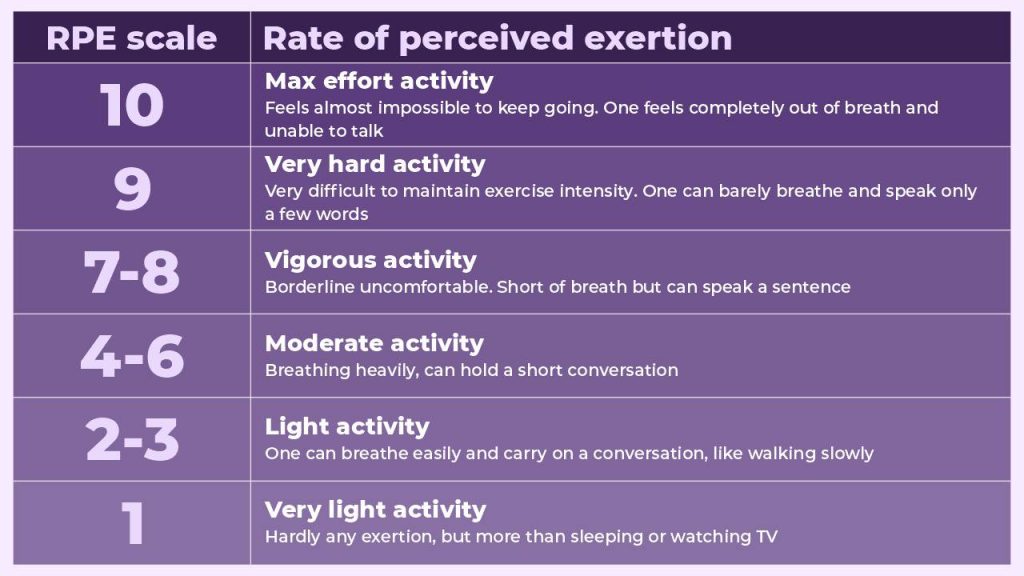
Opposed to percentage-based training, RPE training accommodates daily stressors, such as sleep, work-related stress, and nutrition, thereby giving the lifter a chance to avoid feeling burnt out.
If you are a beginner, performing two to three sets of each exercise with 10-15 sets per muscle group per week at an intensity of 60%-80% is a good place to start. Gradually, as your body starts adapting to the stress of training, you could then focus on increasing the intensity.
Whether you are an advanced athlete or a beginner, it’s important to balance training intensity and training volume right from the beginning. It helps in
- Reducing the risk of injury
- Optimal adaptation to training
- Optimal recovery
- Avoiding the conditions of overreaching and overtraining
- Keeping the process of training fun and motivating
- Proper application of overload and progression
Keeping the balance would also allow you to enjoy the experience of working out rather than approaching it as a chore.
References
1. Current Sports Medicine Reports. Journals.lww.com. 2021. https://journals.lww.com/acsm-csmr/pages/default.aspx (accessed 21 March 2021).
2. Impellizzeri F, Marcora S, Coutts A. Internal and External Training Load: 15 Years On. International Journal of Sports Physiology and Performance 2019; 14: 270-273.
3. Coffey V, Hawley J. Concurrent exercise training: do opposites distract?. The Journal of Physiology 2016; 595: 2883-2896.
4. BarBend Newsletter – BarBend. BarBend. 2021. https://barbend.com/newsletters/ (accessed 21 March 2021).
5. Chen M, Fan X, Moe S. Criterion-related validity of the Borg ratings of perceived exertion scale in healthy individuals: a meta-analysis. Journal of Sports Sciences 2002; 20: 873-899.
6. Eston R. Use of Ratings of Perceived Exertion in Sports. International Journal of Sports Physiology and Performance 2012; 7: 175-182.
7. ACE | Certified Personal Trainer | ACE Personal Trainer. Acefitness.org. 2021. https://www.acefitness.org (accessed 21 March 2021).
8. Expert Strength Coaching + Free Content | Barbell Logic Online Coaching. Barbell Logic. 2021. https://barbell-logic.com (accessed 21 March 2021).
9. Kasper K. Sports Training Principles. Current Sports Medicine Reports 2019; 18: 95-96.
10. Lorenz D, Morrison S. Current Concepts in Periodization of Strength and Conditioning for the Sports Physical Therapist. Int J Sports Phys Ther 2015; 10: 734-47.
11. Bomgardner R. Rehabilitation Phases and Program Design for the Injured Athlete. Strength and Conditioning Journal 2001; 23: 24-25.
12. Reiman MP, Lorenz DS. Integration of strength and conditioning principles into a rehabilitation program. Int J Sports Phys Ther 2011; 6: 241-53.





